photos
by Mike Carrell
About two dozen residents contributed material for the display. Wikipedia
was used as the reference. Go there for more about the history and lore
of Amethyst and
Turquoise.
Amethyst is a violet variety of quartz often used as an ornamental stone in jewelry. The name comes from the Ancient Greek a- ("not") and methustos ("intoxicated"), a reference to the belief that the stone protected its owner from drunkenness.
Unlike amethyst which has an obvious crystalline structure, turquoise is made up of such minute crystals, that its crystalline nature is only vaguely revealed even microscopically. A secondary mineral, it apparently forms by the action of percolating acidic aqueous solutions during the weathering and oxidation of pre-existing minerals.
First the entire case, then closeups of each of the nine sections
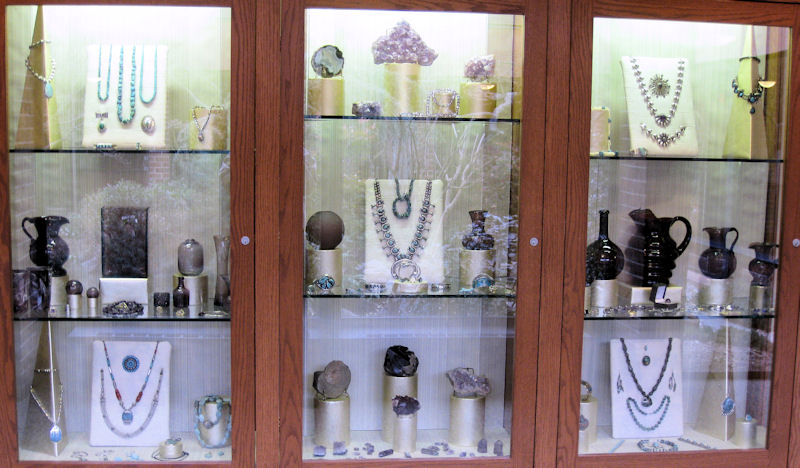
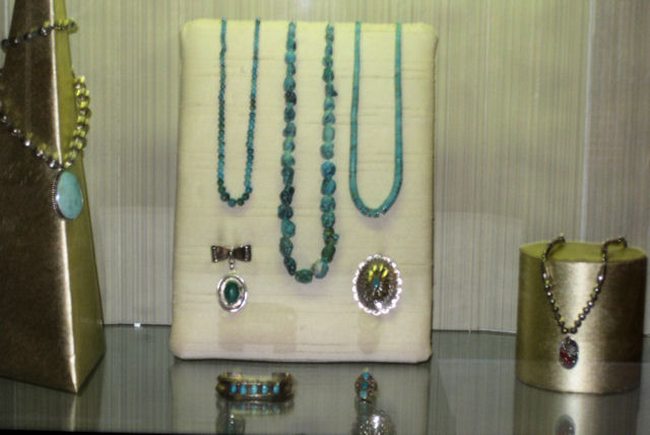
Top
Row
Left Column
The necklace in the center uses nuggets which have been polished and organized by their size, but which remain in their original form.
The pendant at the left has a large piece of turquoise shaped and polished like a gem.
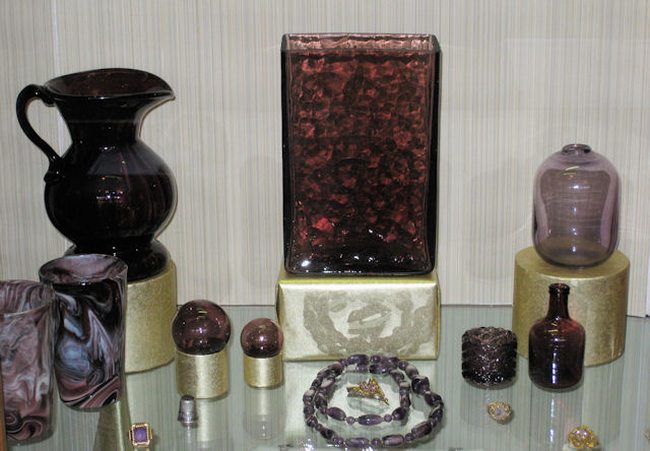
Middle
Row
Left Column
The left and right sections of the middle row feature objects in lavender glass, including the pair of mottled purple and white drinking glasses on the left.
The top edge of the thimble, lower left, is a crystalline surface of amethyst.
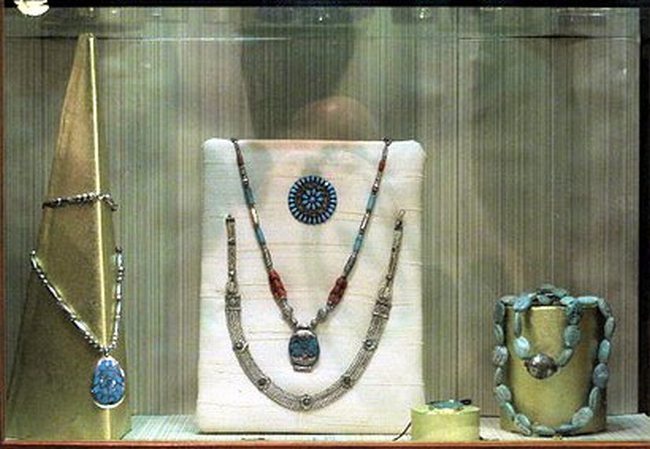
Bottom
Row
Left Column
For at least 2,000 years, the region once known as Persia, has remained the most important source of turquoise. It is in Iran and the Sinai that fine turquoise is most consistently recovered.
.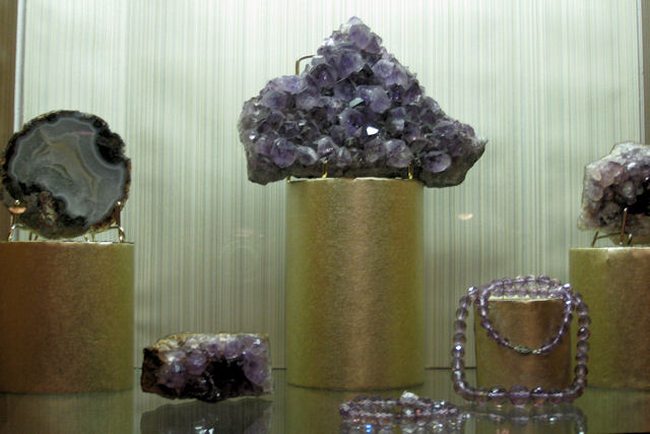
Top
Row
Center Column
The Greek word "amethystos" may be translated as "not drunken". Amethyst was considered to be a strong antidote against drunkenness, which is why wine goblets were often carved from it.
In greek mythology, Dionysus, the god of intoxication, was pursuing a maiden named Amethystos, who refused his affections.
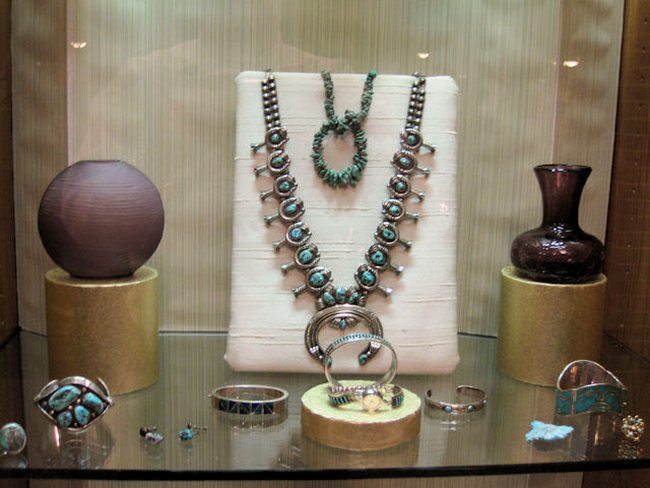
Middle
Row
Center Column
Amethystos prayed to the gods to remain chaste, which the goddess Artemis granted and transformed her into a white stone. Humbled by Amethystos's desire to remain chaste, Dionysus poured wine over the stone as an offering, dyeing the crystals purple,

Bottom
Row
Center Column
Left pillar - a fossilized snail, displayed because it is interesting and aethestically pleasing. Center rear pillar - amethyst in the form of one single crystal.
Here are fragments of geodes in which the crystalline structure can be seen. Two photos up (top row, center column) look for a hemisphere which is a sliced and polished amethyst geode.
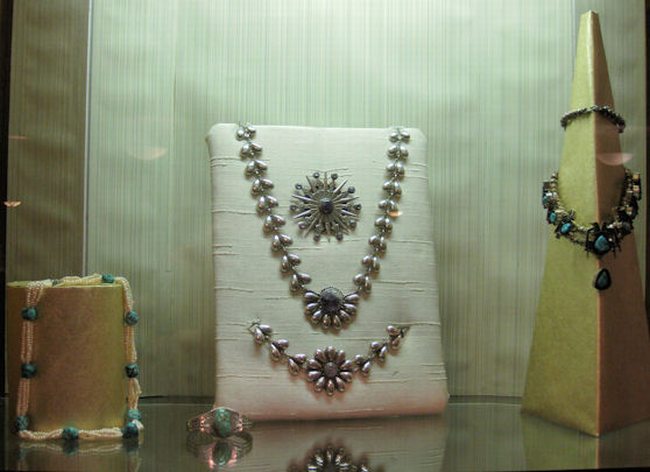
Top
Row
Right Column
Since at least the First Dynasty (3000 BCE), and possibly before then, turquoise was used by the Egyptians and was mined by them in the Sinai Peninsula
The Southwest United States is a significant source of turquoise.The deposits of California and New Mexico were mined by pre-Columbian Native Americans using stone tools, New Mexico is thought to be the location of the oldest mines.

Middle
Row
Right Column
In the US turquoise occurs as vein or seam fillings, and as compact nuggets; these are mostly small in size. While quite fine material—rivalling Iranian material in both colour and durability—is sometimes found, most American turquoise is of a low grade
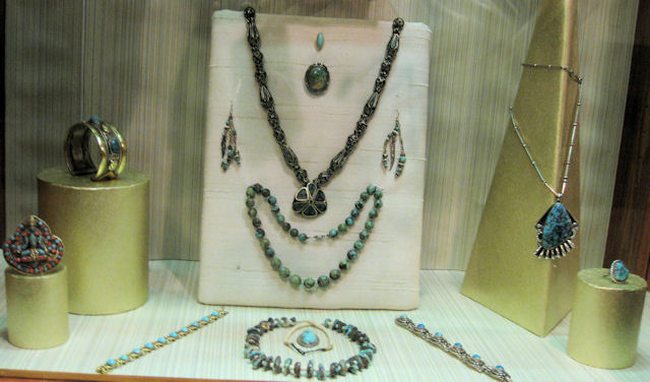
Bottom
Row
Right Column
China has been a minor source of turquoise for 3,000 years or more. Marco Polo reported turquoise found in present-day Sichuan.